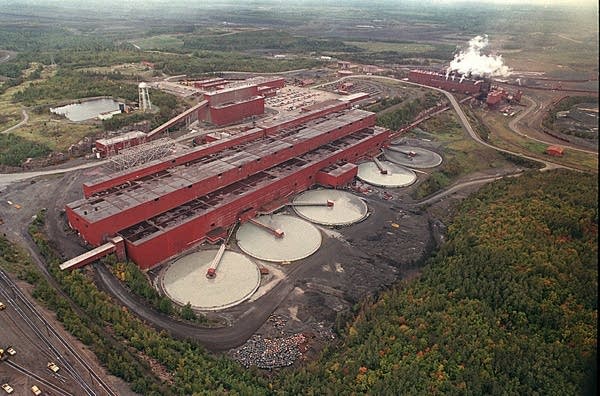Environmental groups question climate change analysis for PolyMet mine

Environmental groups have asked the federal government to do a more thorough analysis of potential climate change impacts from the proposed PolyMet copper-nickel mine.
While most of the debate has centered on potential water pollution from the mine, new federal guidelines finalized in August instruct agencies to fully account for a project's greenhouse gas emissions and societal costs associated with those emissions.
"We're talking about the equivalent of putting over 150,000 new vehicles on Minnesota roads," Aaron Klemz, advocacy director for Friends of the Boundary Waters Wilderness, said of PolyMet's potential impact.
The state Department of Natural Resources has already approved the final Environmental Impact Statement for the project, meaning the company can pursue state permits for the mine. But the U.S. Forest Service and U.S. Army Corps of Engineers have yet to sign off on the extensive document.
Create a More Connected Minnesota
MPR News is your trusted resource for the news you need. With your support, MPR News brings accessible, courageous journalism and authentic conversation to everyone - free of paywalls and barriers. Your gift makes a difference.
Supporters and opponents of the proposed mine have been at odds over whether the analysis is good enough. Polymet's supporters say it is, and they argue that even if the mine isn't built in Minnesota, those emissions will happen anyway, wherever the metals are mined.
On the other side of the debate is the Minnesota Center for Environmental Advocacy, which penned a letter on behalf of several groups. It asked the federal agencies to supplement the document with a better, more detailed analysis of greenhouse gas emissions and associated climate change costs.
Klemz said building a mine like PolyMet's when the state is trying to achieve a 30 percent reduction in greenhouse gas emissions by 2025 just doesn't make sense.
"The last thing we want to be doing is contributing a large quantity of CO2 when we're trying to everything we can elsewhere to limit it," he said. "If someone said, let's put 150,000 new vehicles on the road in the Twin Cities, people would have concerns about that for climate change."
Hudson Kingston, an attorney for the Minnesota Center for Environmental Advocacy, said the federal climate change guidance has been in the works for nearly a decade.
"It's saying, across the board, whether you're the post office, whether you're the Navy, whether you're the U.S. Forest Service, that you have to play by the same rules and you cannot pretend that climate change is not happening," he said.
Kingston said the groups aren't arguing that the agencies ignored climate change. But he said the analysis isn't good enough.
For example, he said it doesn't adequately account for the carbon that would be sequestered over the years if the mine is not built. Carbon would be released from hundreds of acres of wetlands when the mine is built on land that's currently part of the Superior National Forest.
"We've been making these comments for years. We're not trying to say, 'Oh my goodness, this is a new issue that we didn't bring up and we just thought of it today,'" Kingston said.
It's the first Minnesota project that could be affected by the federal climate change guidance.
But PolyMet officials say they anticipated the federal guidance and said in a written statement that the Final Environmental Impact Statement "was specifically prepared to be consistent with a draft" of the new climate change guidance.
In the environmental study, the government agencies responded to concerns about carbon emissions. They point out the wetlands destroyed by the mine will be replaced by nearly double.
Government agencies, the company and environmental groups may disagree about how much additional carbon dioxide the PolyMet mine would emit. But there's no question it would add to the state's emissions.
One of the main ways is through electricity use. PolyMet would get electricity from Minnesota Power, which currently generates two-thirds of its power by burning coal.
The utility's energy mix is changing in favor of more renewable energy, but the Environmental Impact Statement says the PolyMet mine and processing facility would still result every year in emitting roughly 700,000 metric tons or the equivalent of carbon dioxide.
For concerned citizens like Craig Blacklock, of Moose Lake, that's enough to hit the pause button. He said the metals will still be there when Minnesota's electricity sources are 100 percent carbon-free.
"We not only have to provide jobs for people but we have to provide a planet for our kids," he said.